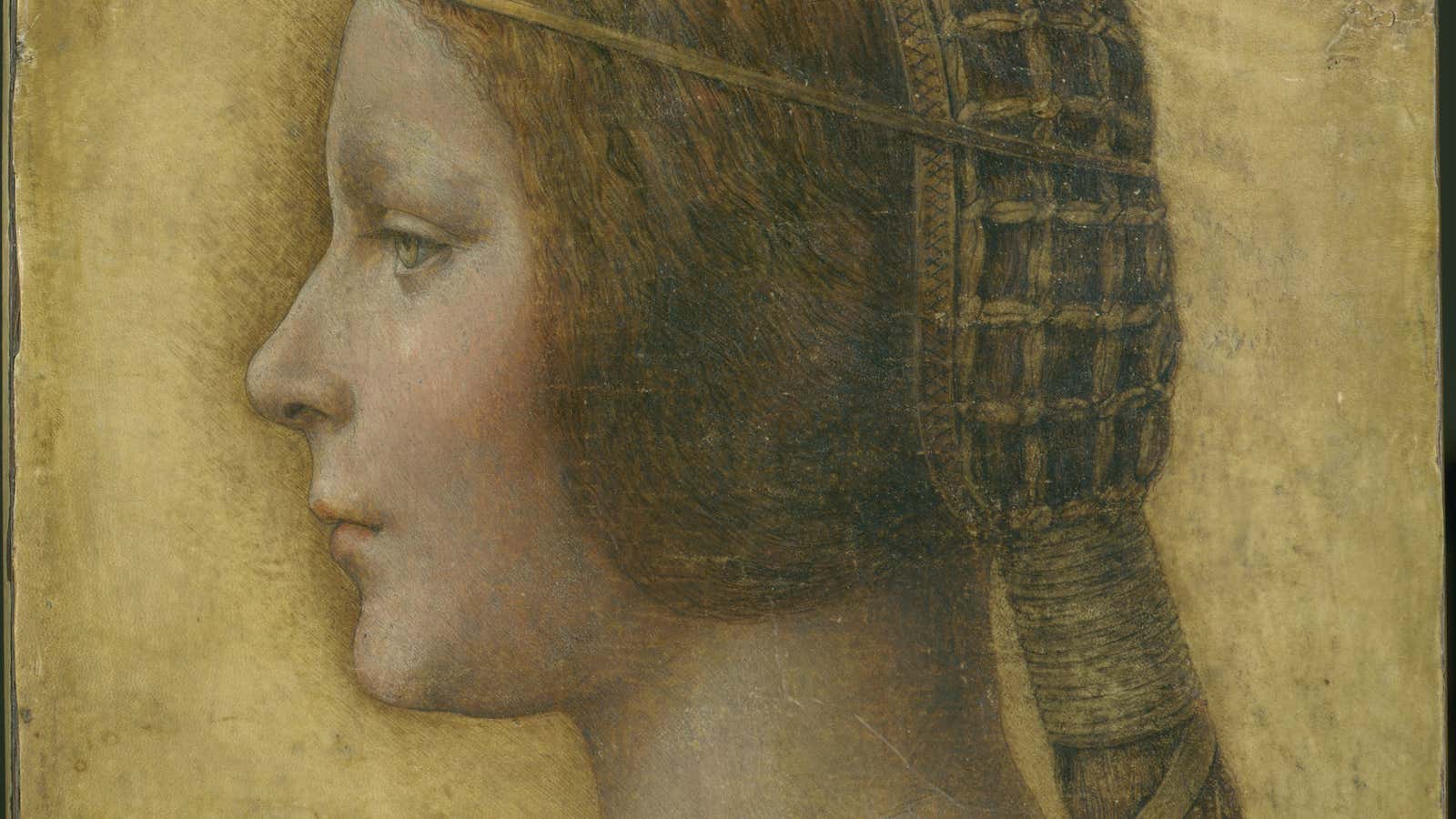A convicted forger claims he is the true artist of a painting that many experts believe is a Leonardo da Vinci masterpiece worth $150 million.
Shaun Greenhalgh, who was sentenced to four years and eight months for forgery by a British court in 2007, says that he drew La Bella Principessa in 1978, according to The Sunday Times (paywall). Greenhalgh claims—contrary to one da Vinci scholar’s belief that the painting depicts the illegitimate daughter of the duke of Milan—that the sitter was in fact his colleague at a Co-op supermarket in Bolton, UK.
In his new book, A Forger’s Tale, Greenhalgh writes that the woman in his painting is named Sally and worked at the checkout. He adds:
“Despite her humble position, she was a bossy little bugger and very self-important.”
The painting in question had been listed, unnamed, for auction at Christie’s in New York in 1998 and sold for $21,850 before it was sold again, for roughly the same price, in 2007. It only gained recognition as a long-lost da Vinci in 2008, after Canadian collector Peter Silverman, claiming he was a friend of the new owner, said he had spotted the painting in a drawer and thought that it could be by the Italian master. (Silverman later admitted that he first saw the work at an exhibition in New York, put on by the gallery owner who had purchased the work in 1998, and that he then bought the painting on behalf of a Swiss collector who wished to remain anonymous.)
Several experts, including Oxford scholar Martin Kemp and Pascal Cotte, a founder of the art-digitzation firm Lumiere Technology, strongly believe the painting is a da Vinci. The artwork has been exhibited as such in Italian galleries.
But others resist the theory. Pietro C. Marani, an Italian da Vinci scholar who oversaw the restoration of the Last Supper, previously said, “I have not found this drawing to be compatible either in technique or in style with Leonardo,” while Carmen Bambach, curator of drawings at New York’s Metropolitan Museum of Art, said the artwork “does not look like a Leonardo.”
Experts continue to debate whether or not the painting is truly a da Vinci. While Kemp claims the latest laboratory tests prove the painting is 250 years old, according to the Sunday Times report, Greenhalgh says he used his own pigments from old materials, including clay he dug up and charcoal from century-old trees. Art historian Waldemar Januszczak, who wrote the forward to Greenhalgh’s memoir, says these natural ingredients could fool laboratory tests.
It seems there’s no definitive answer as to whether the painting is truly a da Vinci that went missing for 500 years, or simply an excellent forgery. But when it comes to evaluating the evidence, perhaps it’s best to treat a forger’s promise with a little skepticism.
